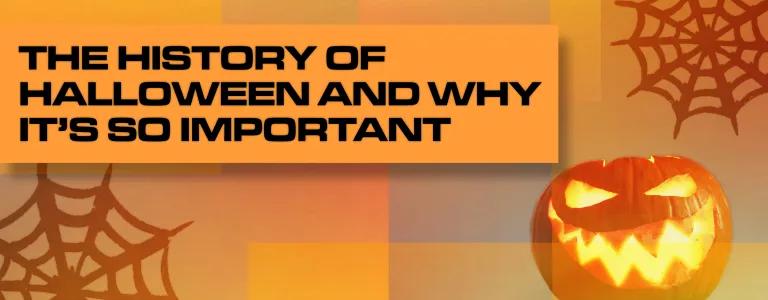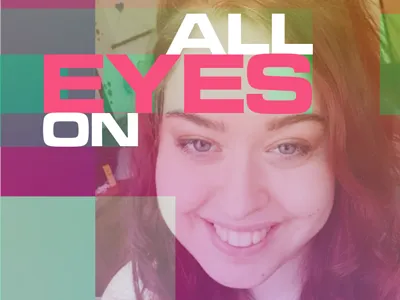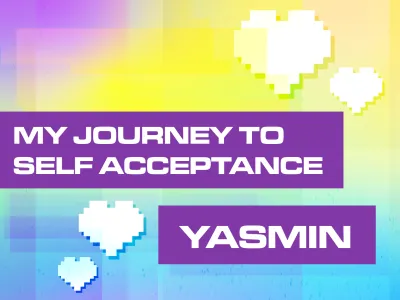
The History Of Halloween And Why It's So Important
Include this article in your Skills Builder Journal. It could help you develop... 
So, today is probably one of the most beloved holidays in the world, Halloween, also known as All Hallow’s Eve, Feast of the Dead, Day of the Dead, Old Hallowmas, and to the local Pagans and witches in town, Samhain (pronounced SOW-in). It’s great fun getting dressed up in your scariest costume and makeup, going trick or treating and carving scary pumpkins, but not many of us are truly aware of the significance of this day, and where most of our traditions stem from. Have you ever wondered what Halloween is really about? Keep on reading to find out...

Halloween dates back to the Ancient Celts, who celebrated Samhain as the third and final harvest festival of the year, and as the day to honour ancestors and spirits who may wander the earth on the night where the veil between our world and the spirit/other world is at it’s thinnest. Samhain falls at the midpoint between the autumnal equinox and the winter solstice. It is also widely seen as the Old Celtic New Year’s Eve, and is celebrated for three full days and three full nights from 31 October to 2 November. In the Southern Hemisphere this day is celebrated by Pagans as Beltane, otherwise known as May Day. This depends on whether the individual follows the Pagan Wheel of the Year, which consists of eight main sabbats celebrating the seasons, equinoxes and solstices, and if they decide to celebrate by the date itself or by the holiday constituting the season they are currently in.
The word Samhain is thought to come from old Irish, meaning ‘summer’s end’, and represents the end of the period of growth and harvest of crops, and the beginning of the dark, long winter season ahead. Samhain celebrates the cycle of death and rebirth, as light is always followed by darkness. This trails back to the Celtic day, starting and ending at sunset rather than sunrise. This is also why Samhain is celebrated from the evening of 31 October into 1 November as the first whole day of celebrations, symbolising how the day emerges with light from the darkness, and reminds us of the limitless potential and fertility of new beginnings to come.
Samhain is also famous for being the most important out of the four Celtic Fire Festivals, its counterbalance being the Beltane Fire Festival. The Samhain Fire Festival symbolises early man’s attempt at guiding the sun on its journey across the skies. Fire was regarded as the earthly counterpart of the sun, and was seen as a motivation to overcome any sense of decay and death of nature and light as the winter season arrived. Mythologically speaking, the sun descends into the underworld, forcing the unearthly creatures, spirits and gods to ascend to earth, wandering around on Samhain night. The fires lit on Samhain acted as protection from harmful entities, and offered warmth and guidance for passing spirits who may seek solace from the cold earth on this night.

This guidance also extends to Jack-O’-lanterns - or carved pumpkins - coming from the Celtic folk tale of ‘Stingy Jack’, a drunken farmer who tried to trick the Devil. In doing so, he was refused entry to both Heaven and Hell, and was left to wander in a limbo between the worlds of good and evil with nothing but a hollow turnip, and an ember inside it to act as a lantern to light his way around. As the Irish were forced to flee to North America due to the potato famine in 1846, turnips were more difficult to come by, and the tradition of carving turnips turned to carving pumpkins, which were a lot more commonly found. Lighting hollow pumpkins and leaving them outside is thought to help guide lost souls and spirits along their journey, whilst also being scary enough to protect the home from unwanted entities or energies.
The idea of dressing up in costumes on Halloween may well come from Celtic mythology. Donn, Lord of the Dead, was an invader who drowned in a storm along with twenty four of his comrades whilst trying to invade Ireland.His name means ‘brown’, is associated with the darker colours of the underworld, and has even been associated with Christian portrayals of the Devil. It is believed that Tech Duinn, where he was buried, is the junction at which damned souls would linger before being sent to Hell. It was thought to be likely that Donn Lord of the Dead would wander the earth and carry off souls to the underworld, and ritual offerings would be left out for him, as well as other ancestral spirits, in order to appease him. Dressing up as the dead or as spooky as possible was believed to be a way to ward him off and protect yourself from being carried to Hell by him and other ghosts and spirits when walking outside on Samhain eve.

The tradition of trick or treating derives from the very principle that ghosts, spirits, fairies and creatures from the underworld are not always harmless, and providing sweet offerings would stop them from being angry and prevent their malevolent dispositions from arising and causing harmful consequences to those who did not appease them. The tradition of dressing up also continues to provide a fun way for kids to collect sweets, pretending to be all sorts of creatures and ghosts. If displeased or unhappy with the offerings or lack thereof, they could play a ‘trick’ to represent the real consequences of displeasing a ghost. It was also believed that ghosts could disguise themselves in any human form, such as a beggar asking for food or money, and turning them away empty-handed would cause unfortunate consequences. It was common for folk to play tricks on one another on Samhain and blame it on the mischievous fairies wandering the earth, which have now evolved to pranks like tee-peeing people’s houses and using silly string and fake spiders to scare people.
A big dinner is traditionally prepared on Samhain eve, indulging in a ritualistic meal called a ‘dumb supper’, where a hearty meal is provided for the family and the table is set with an extra seat and plate of food for any ancestor or dearly departed soul who may come to visit on this sacred night. This dinner honours the dead (including any pets or animals), and offers hospitality to them and remembrance of their souls. One good way to do this is by preparing their favourite meals, talking about them and discussing memories shared with them, listening to their favourite music, and setting up an altar with their photos and items you might have received from them. Lighting a candle is always symbolic, and thinking of them and inviting their presence into your home will increase the likelihood of their visitation.
There are many more Halloween superstitions and traditions which date back for centuries, so don’t hold back on your own research! I hope you enjoyed reading this article and that you learnt much more about the history of our beloved Halloween.




